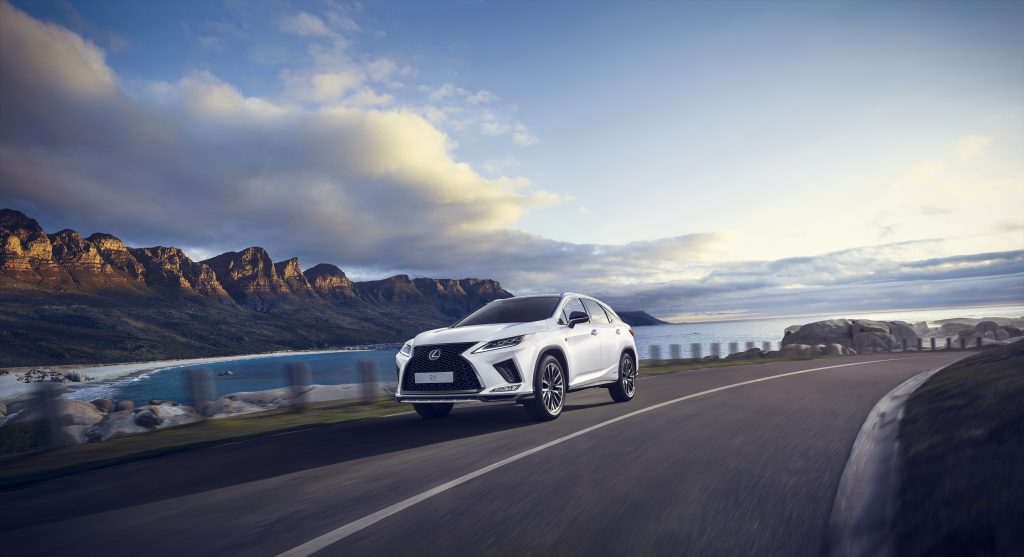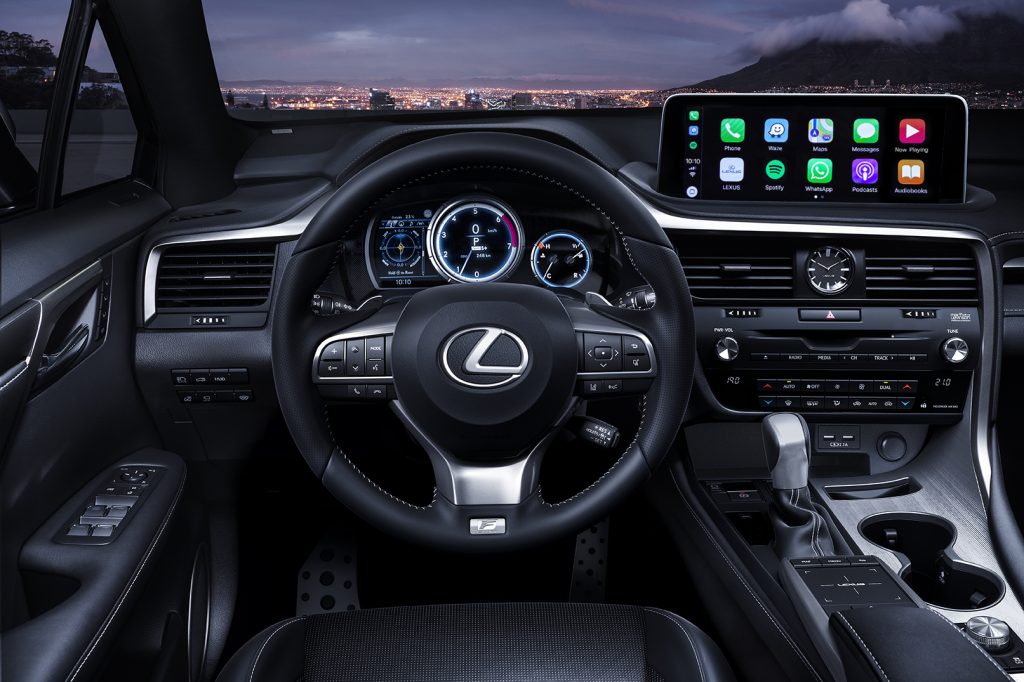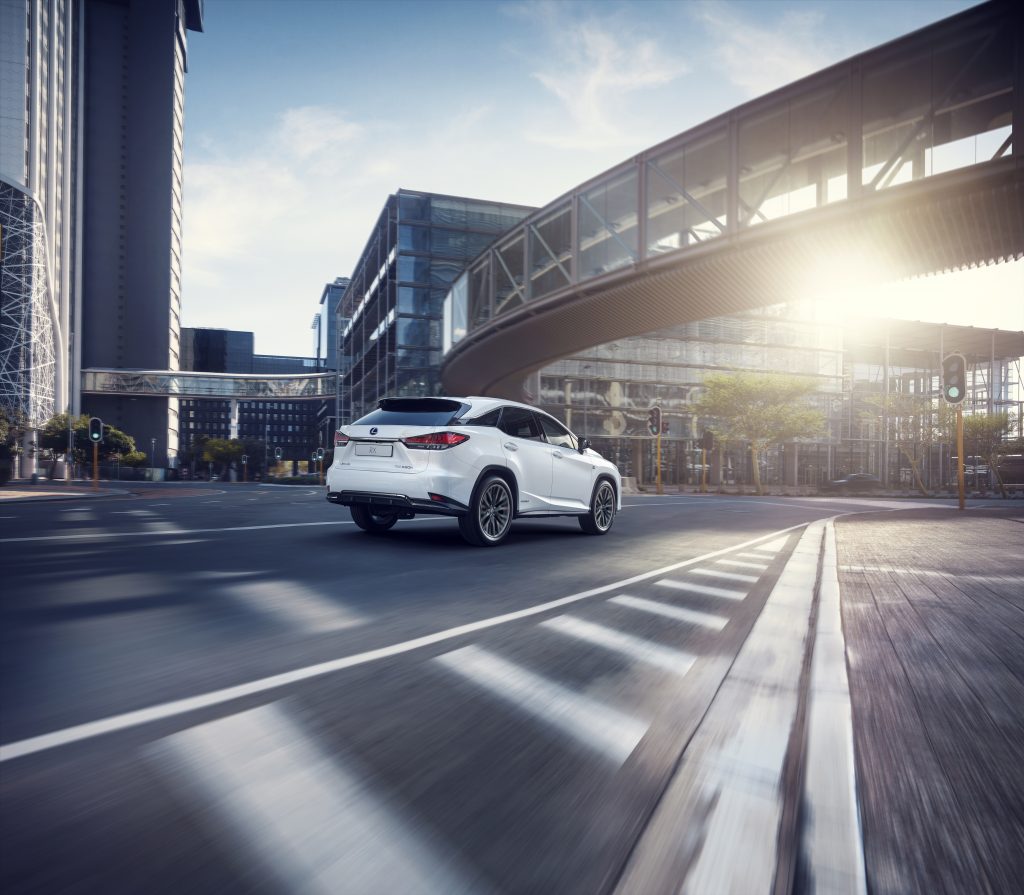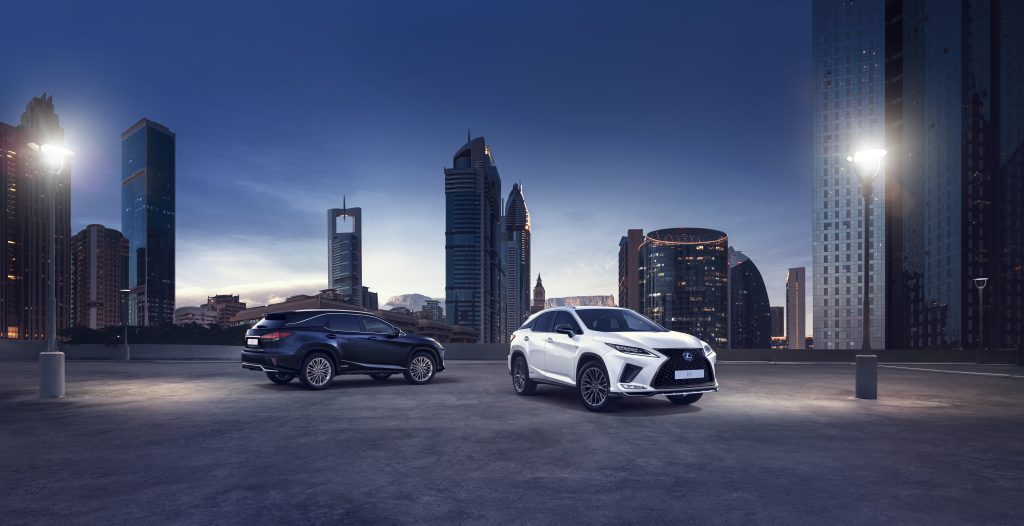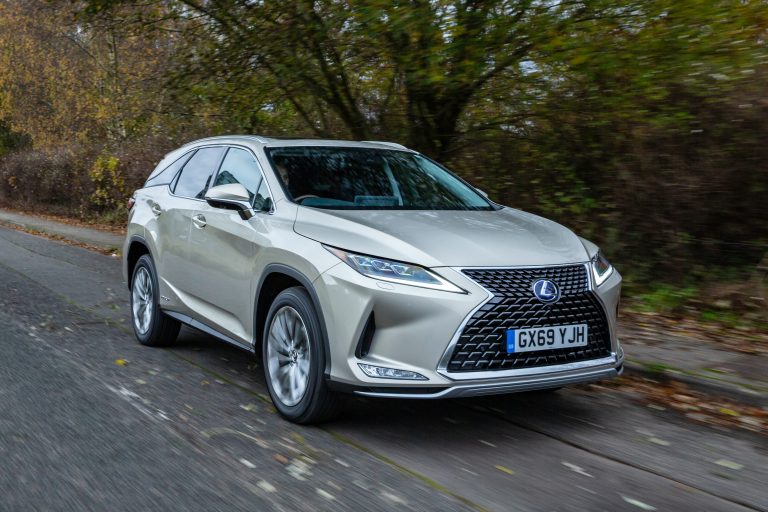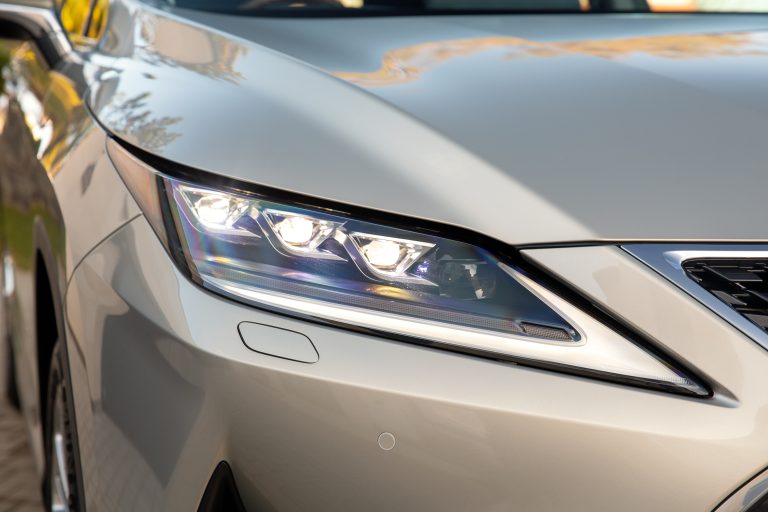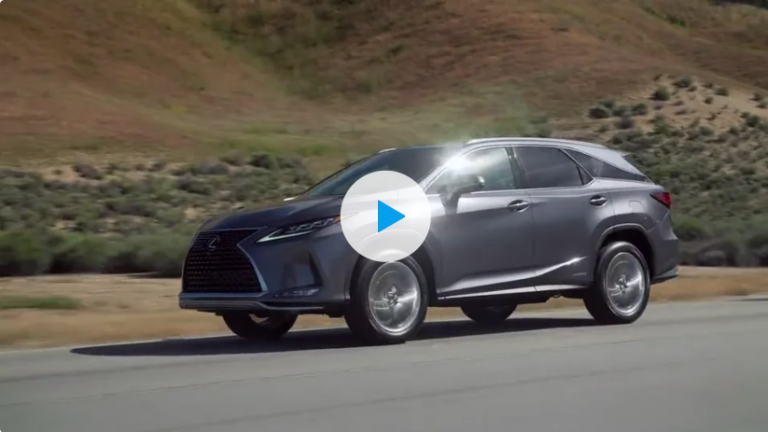World Debut of the New Lexus RX Luxury SUV
Lexus today reveals the new RX luxury SUV, sustaining the model’s reputation as a pioneer in its class. When the original RX was introduced in 1998, it helped establish the market for prestige SUVs, while in 2004 it was the first premium model to adopt self-charging hybrid technology.
The new RX and seven-seat RX L are due to go on sale in the autumn; prices and full specifications of the UK range will be announced nearer the on-sale date.
They retain their powerful, sporty appearance, with more emphasis given to the character line that runs the full length of the vehicle to generate a more flowing, consistent look. In terms of driving character, the focus has been on achieving more engaging performance, building on the experience Lexus gained in engineering the LC coupe and LS saloon models. Every part of the vehicle was scrutinised to see where gains could be made, leading to enhancements in body rigidity and suspension performance. The result is a car with excellent handling feel and precision steering that allows accurate tracing of the drivers’ desired lines.
The new RX also benefits from new technologies, with the latest Lexus Safety System+ portfolio of active and preventive safety systems and the adoption of a new multimedia touchscreen with Apple CarPlay and Android Auto smartphone connectivity.
Exterior and interior styling
The new RX sports new-look, sculpted bumpers that achieve a flowing integration of the more prominent character that flows from front to rear, increasing the car’s dynamic look.
The rocker panels connect with the bottom of the spindle grille along a straight line, generating a heightened sense of strength and stability. Meanwhile, at the rear of the vehicle, the lower part of the bumper has been linked to the rear wings, which in turn blend with the window graphic at the base of the C-pillar, creating a distinctively elegant and powerful shape.
The rear end has also been given a sportier look by adjusting the arrangement of the tailpipes and valance.
The signature spindle grille has a new modulation of its L-patterned mesh and new frame that blends into the front bumper to create a unified profile. The slender new headlamps add sharpness to the frontal appearance, while at the rear the combination lamps are arranged in an L-shape motif.
In the seven-seat RX L the third row seats now have two different seating positions, with the additional new setting giving more leg room for the occupant when required.
Enhanced stability and linear steering feel
Lexus RX Chief Engineer Takeaki Kato worked closely with the production team to improve areas of the car’s performance that contribute to driving pleasure and agile handling. This included increasing body rigidity and making detailed adjustments to the suspension.
To gain greater rigidity, greater use has been made of laser screw welding and spot welding, together with more extensive application (4.2m) of high-strength adhesives in key areas. Together with the use of stiffer anti-roll bars (now hollow-section with a 1mm increase in diameter) and more rigid hubs, this gives more immediate response to steering inputs.
The RX is equipped with Active Cornering Assist, which suppresses understeer when the driver steps on the throttle in mid-bend. Significant improvements in tuning of the electric power steering result in a much more linear feel and faithful line tracing in all driving conditions.
New-design shock absorbers have been introduced, fitted with a friction control device which further reduces the high-frequency vibrations caused by minute imperfections in the road surface. The dampers also allow for flat cornering and exceptional responsiveness.
World-first BladeScan Type Adaptive High-beam System
Lexus is a pioneer of automotive lighting technology, being the first auto maker to introduce LED headlights and an Adaptive High-beam System (AHS) to improve night-time illumination without the risk of dazzling other road users. With the new RX, it achieves another world first with the introduction of a new BladeScan Type AHS.
This operates by shining light from LEDs on to two blade-shaped mirrors that are rotating at high speed. The light is then transferred onto a lens to illuminate the road ahead. Although to the naked eye the light does not appear to be moving, its distribution is precisely controlled by synchronising the spinning of the blade mirrors and the switching on and off of the headlights.
Because the effect of the high beam can be expanded in more natural manner, the system lights up areas that may be difficult to see using a conventional high-beam system, such the shoulder of the road. It also helps the driver see pedestrians and road signs much earlier, without interfering with the visibility of drivers of vehicles ahead, or oncoming traffic. Pedestrian recognition at night has been improved to 56 metres in front of the Lexus using BladeScan technology, compared to 32 metres with the previous system.
Latest generation of Lexus Safety System+
The new RX benefits from the latest version of Lexus Safety System+, equipping it with advanced safety and accident prevention technologies to warn the driver of a collision risk and help them avoid or mitigate the severity of an impact.
The features include: –
- The Pre-Collision System (PCS), which monitors the road ahead using an in-vehicle camera and a millimetre-wave radar, is now able to detect pedestrians in day and night-time driving and bicycle riders during daylight.
- The radar-controlled Adaptive Cruise Control (ACC) works in conjunction with the Lane Trace Assist (LTA) to make it easier for the driver to keep the RX in its intended traffic lane. If the system detects the car is straying out of lane, it alerts the driver with a visual warning and either a buzzer or vibration of the steering wheel (it can also apply a small amount of corrective steering).
- Road sign Assist (RSA) acquires road sign information using a camera and information from navigation system maps and presents it as an image on the head-up display and driver’s multi-information display. This reduces the risk of the driver overlooking important warnings and commands such as speed limits and lane closures.
New connectivity functions with introduction of Apple CarPlay, Android Auto and new multimedia touchscreen
The new RX offers a new multimedia touchscreen in addition to Lexus’s Remote Touch Interface (which is now exclusively in trackpad format).
Smartphone use is also catered for with a new phone holder, USB port and connectivity to Apple CarPlay and Android Auto.
Using voice control, customers can access Apple Siri or Google Assistant via their smartphone, and they can also choose whether to use the Lexus Navigation system fitted to their vehicle, or an alternative service on their smartphone.
ENDS

